Through his coaching tree, LaVell Edwards’ influence on football will never cease
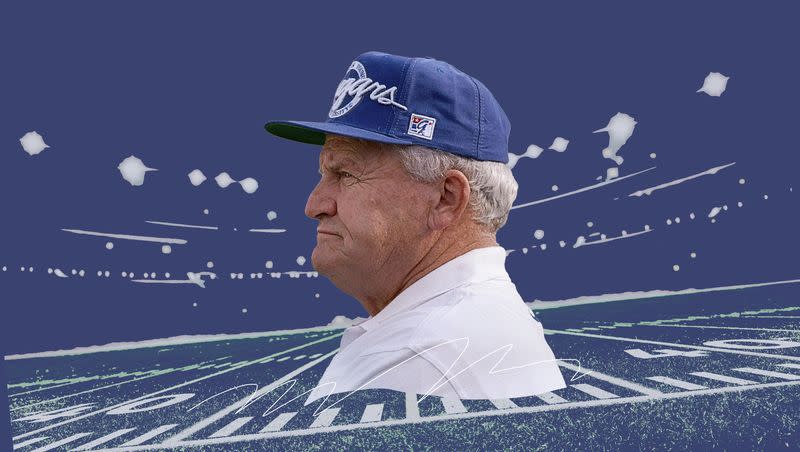
LaVell Edwards wasn’t just running a college football program at BYU.
Over the course of his 29-year run at the helm of the Cougars, Edwards operated one of the most decorated coaching academies the sport has ever seen.
Forget about the “quarterback factory.” Under Edwards, BYU became an assembly line to churn out an absurd amount of groundbreaking football minds, and the ripple effects are still being felt across today’s widespread college and NFL landscapes.
Edwards won 257 games, 19 conference titles and a national championship not because of any personal genius of his own, but rather because of the collective brilliance of the coaches he brought together to help shape his vision and bring it to life.

More than 20 college head coaches — and a number of other accomplished coordinators — spent time on BYU’s staff with Edwards.
Three NFL head coaches have come from the Cougars, and each of them have won Super Bowls, including Andy Reid, who looks to earn a third ring in five seasons Sunday in Las Vegas.
Edwards and his assistants found success through orchestrating an elaborate, unprecedented passing attack based upon scheme, timing and volume to counter opposing physicality.
This radical thinking allowed BYU to regularly topple programs with far more resources and become a true national force.
Looking back at some of the names from old Cougars coaching staffs, it’s easy to see why BYU enjoyed the success it did for so long. From 1978-86 especially, Edwards essentially organized a Manhattan Project in Provo, assembling the brightest minds to yield the most explosive results.
Here’s a look at some of the key individuals to blossom from LaVell Edwards’ coaching tree.
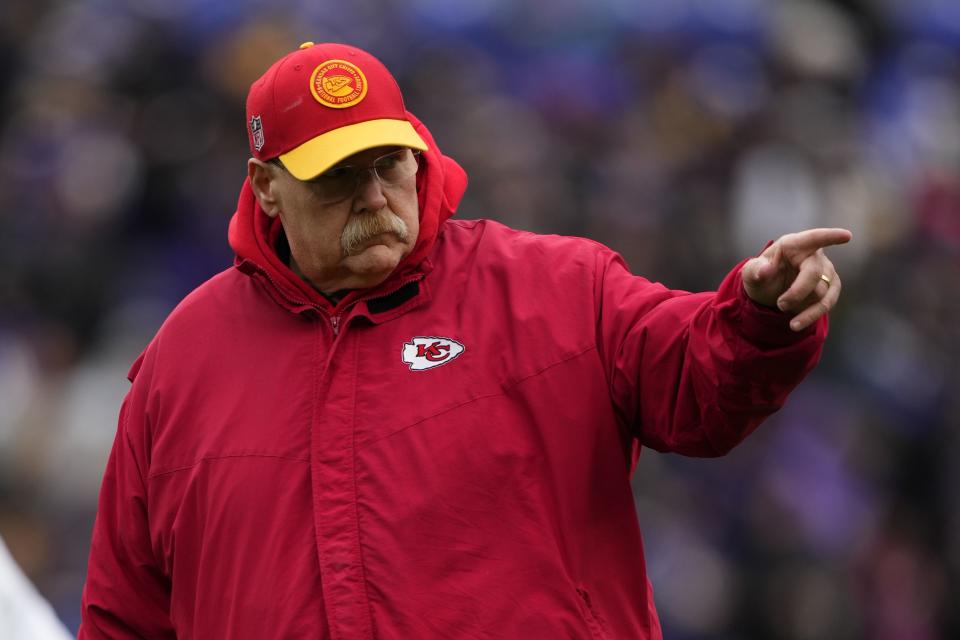
Andy Reid
Now just a win away from winning his third Super Bowl with the Kansas City Chiefs, it’s hard to believe that Andy Reid’s decorated career has all stemmed from just a simple question.
“Have you thought about being a coach?” LaVell Edwards asked Reid during a BYU practice one day. “You’d be a good one.”
At the time, Reid was an offensive lineman for the Cougars, where Edwards had noticed his remarkable attention to detail within the game.
“We’d be out there practicing and working, and there’d be questions coming up on how to pick up a certain blitz,” Edwards later noted. “I noticed a lot of times (Reid) was helping the guard, the tackle or the center next to him, to make sure they understood what to do if there was some kind of stunt or whatever they did ... I remember saying at the time that this guy’s got an unusual feel and knowledge of the game.
“He not only learned and knew what his assignment was, but also the reasons why and the concept of what you’re trying to do. A lot of players didn’t have that concept or ability, but Andy did. He had a feel for it.”
With Edwards’ encouragement, Reid joined his staff as a graduate assistant in 1982. It was there where he met new BYU quarterbacks coach Mike Holmgren, who helped connect Reid to an offensive line job at San Francisco State for the following season.
Reid quickly rose through the coaching ranks, finally teaming up with Holmgren with the Green Bay Packers in 1992, 10 years after they had originally met at BYU.
As Green Bay’s offense flourished under Holmgren and Reid, the Philadelphia Eagles approached Reid to offer him his first head coaching opportunity. He took it and ran, leading the Eagles to the playoffs nine times in 14 seasons with six division crowns, four consecutive NFC title game appearances and a Super Bowl berth.
Let go from Philadelphia despite holding the all-time franchise record for wins, Reid joined the Kansas City Chiefs in 2013, where he’s posted 11 straight winning seasons since his hiring.
Upon inserting Patrick Mahomes at starting quarterback in 2018, Reid’s Chiefs have been near-unstoppable, playing in six consecutive AFC championship games with four Super Bowl appearances and two such victories.
With a lifetime record of 258-144-1, Reid currently holds the fourth-most regular season wins in NFL history and is closing in on Bill Belichick’s record of 31 career postseason victories.
Reid is also the only head coach to win 100 games with multiple franchises.
Eleven of Reid’s former assistants have gone on to become NFL head coaches — with two winning Super Bowls — but Reid has managed a perfect 6-0 mark in the playoffs against his past staffers, including consecutive wins over Sean McDermott’s Buffalo Bills and John Harbaugh’s Baltimore Ravens during this current Super Bowl run.
Known as arguably the most brilliant offensive mind of his generation, Reid has never forgotten where he came from. He has visited BYU often over the years to speak with the Cougars and remains one of the school’s top worldwide ambassadors.
As for his relationship with Edwards, Reid has long expressed his love and gratitude toward his mentor. The two would talk on the phone weekly up until Edwards’ death in 2016.
“(LaVell) was my guy,” Reid said days after Edwards’ death. “I’m probably one of 10,000 guys who are saying that right now. That’s what made him unique; that’s one of the many things that made him such a great person.
“He was great with people; he was a people person. You put all the Xs and Os and put that aside — he was good at that too — but you can put all of that aside. It was the way he handled people that I thought was unbelievable.”
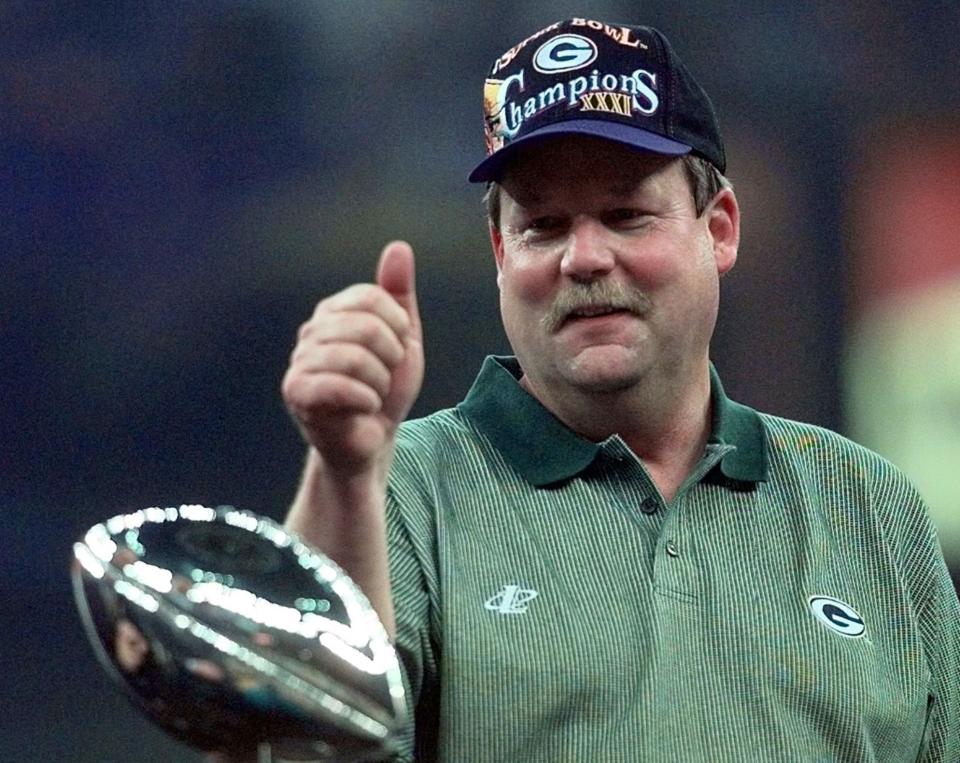
Mike Holmgren
One of the best decisions LaVell Edwards made at BYU came from one of his biggest gambles.
Prior to the 1982 season, he needed a new quarterbacks coach. It was a daunting vacancy — each of BYU’s three previous passers had been First Team All-Americans.
Following the recommendation of a friend, Edwards tapped 34-year-old Mike Holmgren for the job. The men who had preceded Holmgren — Doug Scovil and Ted Tollner — were viewed as accomplished, legitimate head coaching material.
Holmgren, however, barely had a resume. He had spent just a lone season on a college staff.
Knowing exactly what his vision entailed, Edwards refused to be swayed by Holmgren’s inexperience.
“I didn’t need a guru,” Edwards recalled of the hiring in 1998. “I needed someone who could come in and work within the system; someone who had his ego in check enough to let Norm Chow run the offense and confine himself to working with the quarterbacks.”
The “knowledgeable and personable” Holmgren did just that. He mentored Steve Young and developed him into a superstar, then guided successor Robbie Bosco to the National Championship in 1984.
“I never asked (LaVell) why he went out on a limb and hired me, but thank goodness he did,” Holmgren told ESPN 700 in 2016. “He had a lot to do with my future and my becoming a head coach.”
Holmgren continued: “He knew what he wanted to do at that university, and that’s why all we did was pass the ball ... he had a clear vision of what he wanted to do, and he went out and got the guys who did it.”
Holmgren’s time with the Cougars both empowered and inspired him, later saying it had “really expanded my mind as to what was possible in this game.”
He left BYU in 1986 to join Bill Walsh’s 49ers staff, where he coached Joe Montana during his two MVP showings, reunited with Young and won a pair of Super Bowl rings over five years in the Bay Area.
The Green Bay Packers came calling in 1992, hiring Holmgren as their new head coach following just two winning campaigns over the past 19 years.
Holmgren immediately righted the ship, going 75-37 in seven seasons with two NFC titles and a Super Bowl victory over the New England Patriots.
Just as he’d done with Young, Bosco and Montana, Holmgren groomed Brett Favre into a monster at the quarterback position, with the gunslinger winning three MVP awards playing for Holmgren.
Additionally, Holmgren won playoff games in five consecutive seasons, becoming just the second head coach in history to accomplish such a feat.
Holmgren eventually left Green Bay for Seattle, where he won another NFC championship to become the fifth coach to take two different franchises to the Super Bowl.
Also with the Seahawks, Holmgren coached another MVP in Shaun Alexander and molded Matt Hasselbeck into a consistent Pro Bowl quarterback.
Upon finally retiring, Holmgren had compiled a 174-122 career head coaching record along with five total conference titles, three Super Bowl rings and a reputation of being one of the most effective quarterback whisperers of all time.
He has been inducted in both the Packers Hall of Fame and Seahawks Ring of Honor and is now currently chasing enshrinement in the Pro Football Hall of Fame as a recurring candidate.
Not bad for LaVell’s under-qualified hire.
“He was the finest man I ever worked for, bar none,” Holmgren said of Edwards. “He was a great football coach, and very much understated because he let the guys on his staff do the running around and call the plays.
“I learned so much philosophically about how I wanted to conduct my stuff as a head football coach from him. He was great with people, he was great with me.”
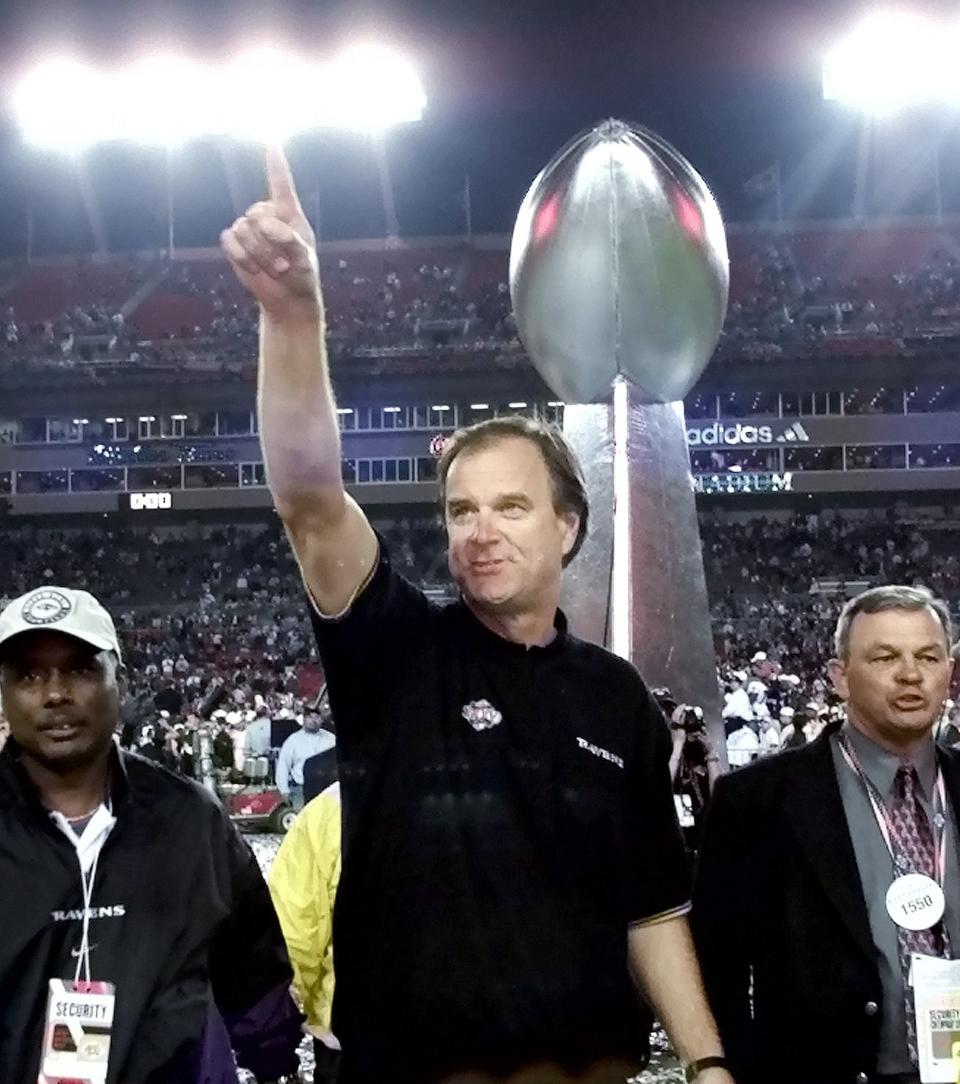
Brian Billick
It shouldn’t seem too surprising that Brian Billick — a former LaVell Edwards staffer — was the mastermind behind of one of the NFL’s most prolific offenses in history.
The relative shock, however, is that Billick’s greatest success would come two years later as head coach of one of the most dominant defensive squads to play the game.
It almost seems like a tribute to Edwards, who had coached BYU’s defense prior to assembling a juggernaut offensive unit.
Billick played tight end for the Cougars from 1974-76, earning All-American honorable mention honors as a senior.
Following a brief go-round in the NFL (and an appearance on the dating show “Match Game PM”), he returned to BYU as a graduate assistant in 1978, just as things were really beginning to heat up for Edwards’ program.
“We overcame all obstacles,” Billick said in 2007 of his time in Provo. “It was a great time to be on the ground floor of what everything BYU accomplished that way. I’m very proud of the time I spent at BYU.”
After bouncing around the college scene, Billick was hired as tight ends coach of the Minnesota Vikings in 1992 before being promoted to the team’s offensive coordinator two years later.
Minnesota reached the playoffs in six out of Billick’s seven seasons with the franchise, including in 1998 when he piloted the Vikings offense to score a then-record 556 points behind the heroics of QB Randall Cunningham and rookie receiver Randy Moss.
Billick’s performance in Minnesota resulted in him being named the NFL’s Assistant Coach of the Year, which he then parlayed into a head coaching job with the bumbling Baltimore Ravens, who had yet to achieve a winning campaign in their brief history.
Baltimore’s fortunes quickly changed under Billick. In year two of his tenure, the Ray Lewis-led Ravens defense allowed an all-time low 10.3 points per game, more than making up for the team’s unimpressive offense all the way to a 34-7 Super Bowl victory over the New York Giants.
In nine total seasons with Baltimore, Billick finished with an 85-67 overall record and four playoff berths. He was ultimately inducted in the franchise’s ring of honor, and six of his past Ravens assistants went on to become head coaches around the league.
And of course, it all began for Billick in Provo under Edwards.
“... LaVell, with his constant sense of priorities, and I don’t know if it’s something I appreciated as much when I was younger, but now, being in this league, it’s hard to keep that sense of priority sometimes,” Billick said.
“It is a very volatile situation, and you’re under public scrutiny. LaVell was so admirable in the way that he did that. I really treasure my time with LaVell as one of the great coaches I was allowed to be around.”
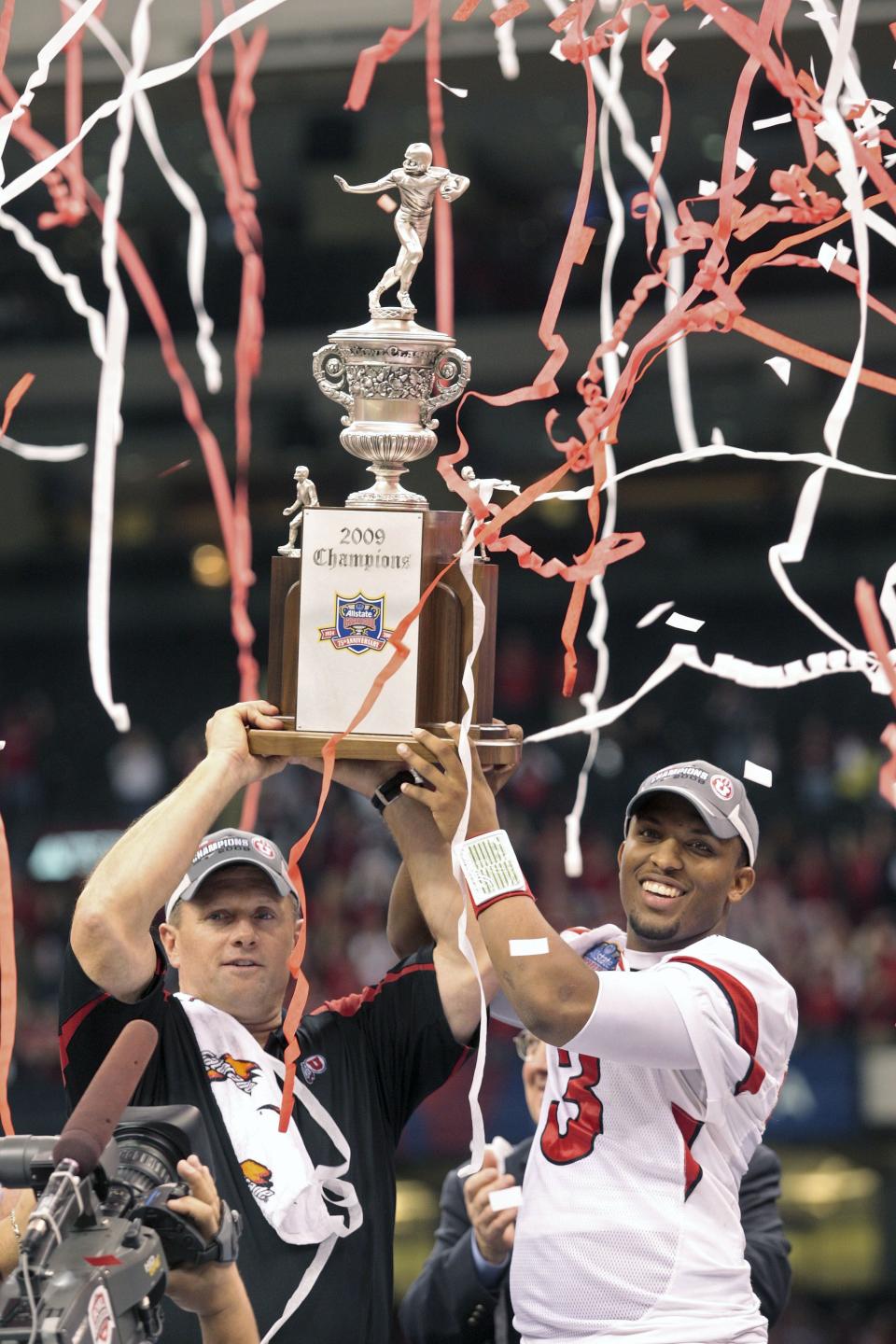
Kyle Whittingham
It was an excruciating decision to make.
Back in December of 2004, Kyle Whittingham was torn beyond belief. He was finally about to make the jump to head coach, but the two offers he had received were making matters terrifyingly complicated.
A former BYU linebacker, Whittingham could go back to his alma mater to rebuild the Cougars program, but having served as Utah’s defensive coordinator for the previous decade, the prospect of leading the Utes was just as enticing.
No matter which job he chose, he felt he’d be betraying a place he loved, not to mention upsetting people close to him on either side.
He went back and forth for days but still couldn’t make up his mind. The situation seemed impossible.
Luckily for Whittingham, his former college coach was willing to help.
“He had some great advice for me at that time,” Whittingham said of LaVell Edwards in 2017. “It was very, very helpful to me.”
While Edwards easily could have pushed Whittingham toward Provo, he truly wanted the best for his former player and graduate assistant, giving him fair, unbiased counsel that ultimately helped Whittingham decide to accept Utah’s offer.
And when various fans, former teammates or others in his life accused him of “turning his back” on BYU, Edwards stood by Whittingham and refused to falter.
“With him, (there was) never a comment or remark at all that could be construed as needling or teasing,” Whittingham said. “It was always just supportive.”
The support was on brand for Edwards, who had emerged as a father figure for Whittingham after his father Fred passed away in 2003.
“It seems like every time I needed it most, when I was struggling the most, he would give me a phone call or send me a note to rejuvenate me,” Whittingham said of Edwards.
Whittingham played for Edwards from 1978-81 before joining BYU’s staff as a graduate assistant for the 1985-86 seasons.
From there, Whittingham made stops at Eastern Utah and Idaho State before landing at Utah in 1994, where he’s remained ever since.
Since becoming head coach in 2005, Whittingham has gone 162-79 with the Utes, capturing three conference titles and finishing the 2008 season ranked No. 2 in the country after beating Alabama in the Sugar Bowl.
He has become one of the most well-respected college coaches nationwide while producing plenty of NFL talent out of Utah.
Amid it all, Whittingham has strived to follow Edwards’ example as an “even-keeled” leader able to maintain “balance” in his program.
“(He was a) tremendous person,” Whittingham said of Edwards in 2023. “Just a great hirer of staff members. He had great staffs down there. Let them do their job, didn’t try to micromanage and really was a guy who made the attitude and the personality of the team very steady and even keeled.
“Never too high, never too low, just a very steadying influence on a football team.”
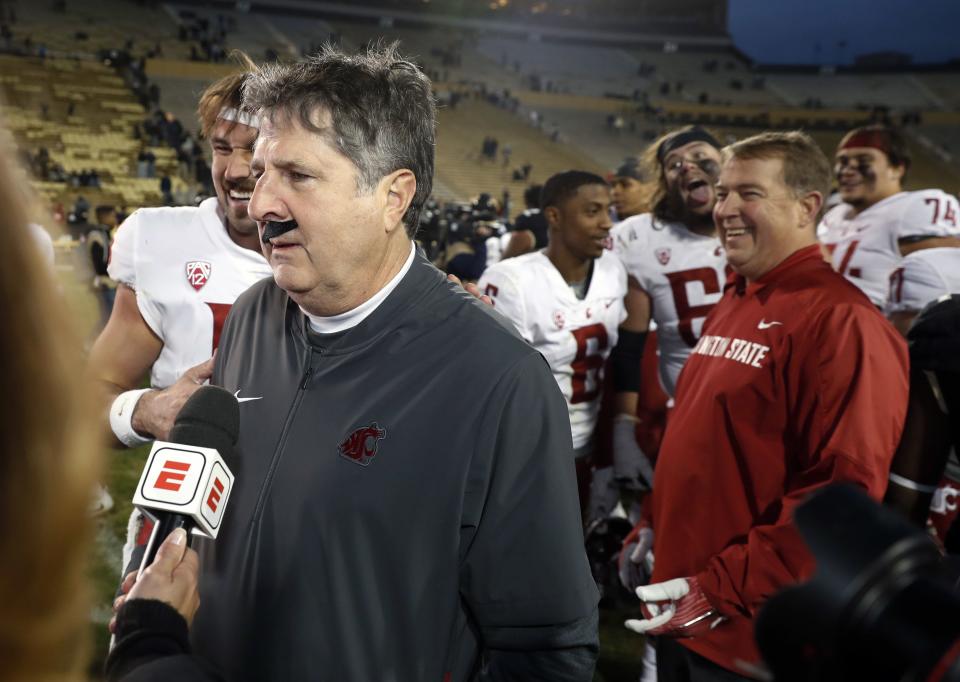
Mike Leach
No matter how many times it happened, Mike Leach was always left starstuck.
As a BYU student and rugby player in the early 1980s, part of Leach’s daily routine included walking down the west campus stairs toward the Richards Building.
Every day as he made his journey down the stairs, like clockwork, he would cross paths with LaVell Edwards.
“I said hi to LaVell every day,” Leach told the Daily Universe in 2022, prior to his passing. “He didn’t know who I was, but LaVell would say hi to everybody he saw on campus every day.
“I said hi to LaVell several times a week for over a year. I was always intimidated just because he was such an iconic guy.”
Edwards was more than just iconic — he was Leach’s idol. Leach became obsessed with BYU’s unique, prolific passing attack after winning free season tickets as a freshman, which had given him a perfect view to observe the Cougars’ scheme and fall in love with throwing the football.
As BYU continued to light up scoreboards, Leach was covering his Helaman Halls dorm room with newspaper clippings regarding the Cougar offense, along with starting a “coaching file” to fill with different plays, formations and concepts he had seen from Edwards and company.
Leach was certain his life’s calling was to be a coach. He eventually overcame his shyness and approached Edwards, who allowed the youngster to come sit in on staff meetings with Norm Chow and other assistants to learn even more about the game.
“That was the perfect time for me to be around BYU, (LaVell) was transforming not just college football but the NFL too,” Leach said.
“People started throwing the ball more aggressively because of the success BYU had while doing it. BYU just started crushing these teams that had more resources and better players. He changed everything.”
After earning a law degree from Pepperdine (how many other football coaches have you seen earn law degrees?), Leach began wading into the uncertain waters of coaching, starting as a part-time assistant at Division II Cal Poly San Luis Obispo in 1987 and climbing all the way to his first head coaching job at Texas Tech in 2000.
Across 21 seasons at Texas Tech, Washington State and Mississippi State, Leach became the face of the air raid offensive movement, following in Edwards’ footsteps by shattering NCAA passing records and garnering widespread acclaim for his efforts.
The base of Leach’s offensive attack stemmed from what he’d witnessed at BYU. The Cougars were his greatest influence.
Leach posted a 158-107 lifetime record along with three conference coach of the year awards, having built three previously irrelevant programs into respected winners.
His career was tragically cut short after suffering a heart attack and dying unexpectedly in December of 2022.
Though no longer physically with us, the presence of “the Pirate” can still be felt all across the sport. Ten current FBS head coaches were Leach assistants at one point, along with current Washington Commanders offensive coordinator Kliff Kingsbury, who used what he learned from Leach to develop Patrick Mahomes at Texas Tech into a first round NFL draft pick.
Leach may have never officially been on Edwards’ BYU staff at any time, but he always considered himself part of Edwards’ coaching tree and would have never gotten into the profession without the influence he enjoyed from watching the Cougar offense.
Everything Leach accomplished and everything he brought to the game of football came from LaVell Edwards.
Thus, there is a spot for the kid from the west campus stairs within LaVell’s lineage.
“He had the ability to recognize and take the very best from everybody around him, and that created a very stable, confident environment leading to a dynasty that lasted for decades,” Leach said of Edwards.
“I think he impacted all of football. If anyone denies that, they’re either lying or stupid, and in some cases they’re definitely stupid and just haven’t looked closely enough to know what they’re talking about.”
Classic Leach.
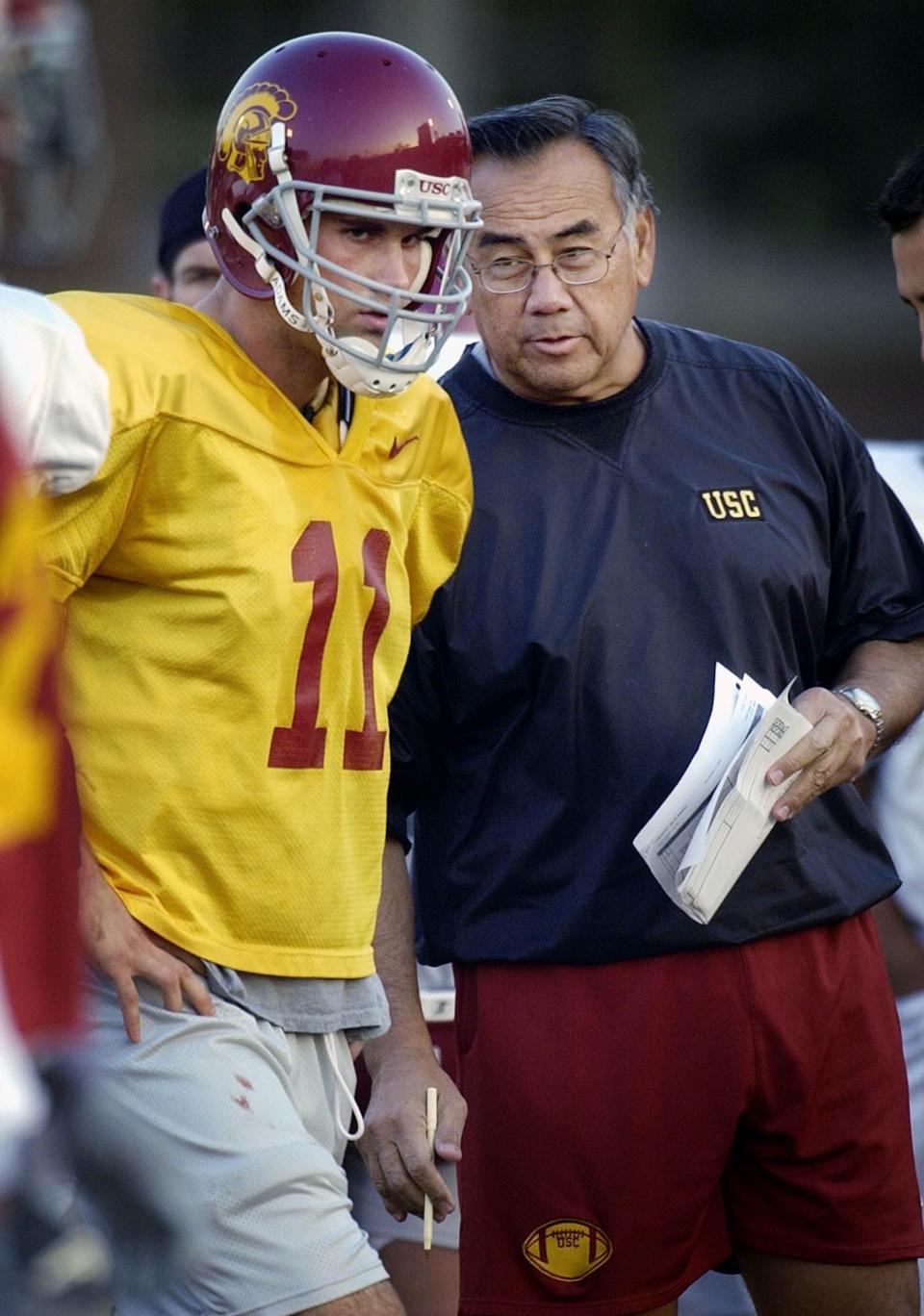
Norm Chow
Of LaVell Edwards’ 29 seasons at BYU, all but two of them came alongside Norm Chow.
The Cougars’ primary offensive playcaller from 1982-1999, Chow was the man responsible for many of the sequences that turned Steve Young, Robbie Bosco and Ty Detmer into household names. Chow’s BYU offenses averaged 30.8 points per game across his 18 seasons calling plays.
Chow left the Cougars in 2000, going on to serve as offensive coordinator at NC State, USC, UCLA, Utah and the NFL’s Tennessee Titans, along with being the head coach at Hawaii from 2012-15.
In his post-BYU days, Chow tutored Heisman quarterbacks Carson Palmer and Matt Leinart at USC — where he won two national titles — along with Phillip Rivers at NC State.
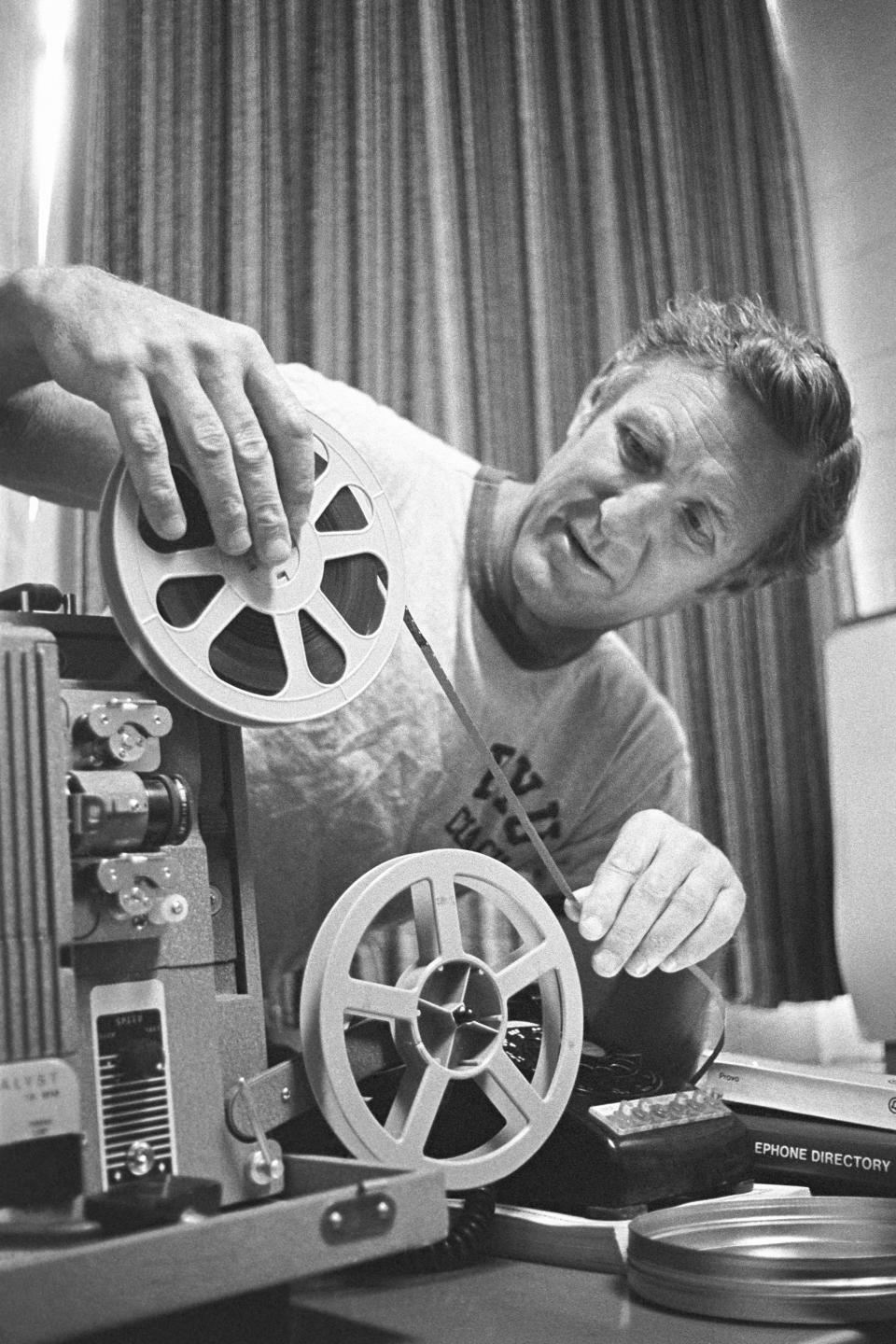
Doug Scovil
No one ever came onto a LaVell Edwards staff with more clout than Doug Scovil, the man who had guided Hall of Fame QB Roger Stabauch during his time at Navy.
Scovil — dubbed the “Mad Bomber” by Sports Illustrated — is widely considered one of the founding fathers of the air raid movement. He was pivotal in developing Gifford Nielsen, Marc Wilson and Jim McMahon into All-American passers.
After leaving BYU for the head coaching job at San Diego State, Scovil spent four seasons with the Philadelphia Eagles to mentor Randall Cunningham, where he died of a heart attack at the team’s stadium in 1989.
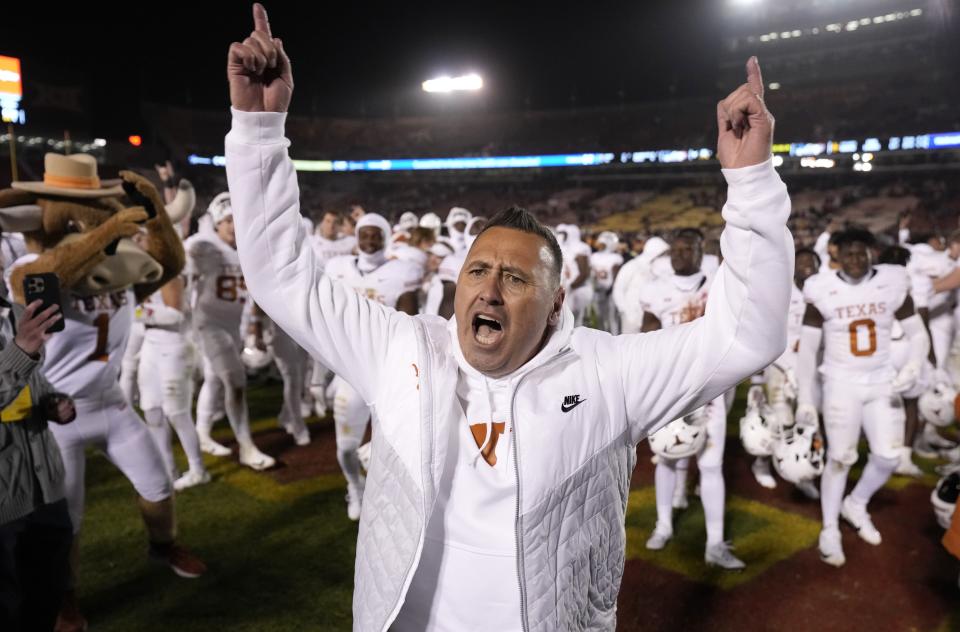
Steve Sarkisian
While Steve Sarkisian never coached alongside LaVell Edwards, he did play as his starting quarterback for two seasons, including during BYU’s magical 14-1 campaign in 1996 when the Cougars won the Cotton Bowl Classic over Kansas State.
Sarkisian is currently the head coach at Texas, where he won the Big 12 title in 2023 and earned the Longhorns’ first College Football Playoff berth in program history.
Prior to Texas, Sarkisian was the head coach at Washington and USC and also a coordinator at Alabama and with the Atlanta Falcons.
The former Cougar holds a 71-49 lifetime record and won a national championship with Alabama in 2020.
Sarkisian shared some memories of his time spent playing for Edwards at BYU before his Longhorns faced the Cougars in October 2023.
“He always kept things light. He was himself,” Sarkisian said of Edwards. “I know everybody always sees the stern face on the sidelines from back in the day, but he was a really lighthearted guy.
“He was really fun to be around. The players liked to be around him. I think that really goes back to having really good relationships with your players and that was something that he had when I was there as well.”
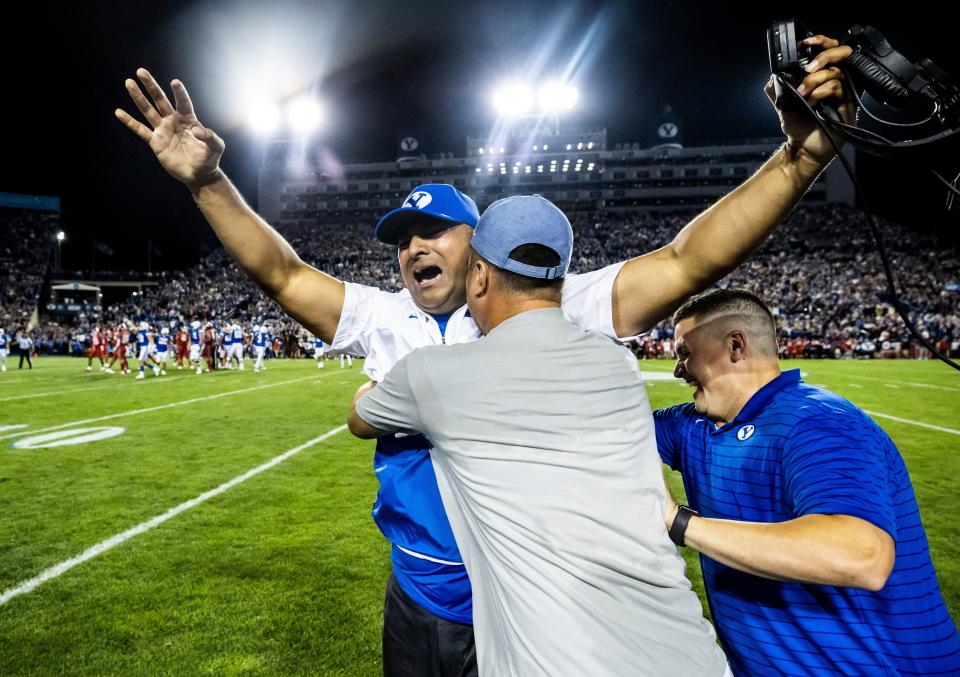
Kalani Sitake
Like Sarkisian, Kalani Sitake was never part of a LaVell Edwards staff, but he played for him as a fullback in 1994 and from 1997-2000 as part of Edwards’ final teams at BYU.
Sitake, now following in Edwards’ footsteps as head coach of the Cougars, has often said his dream is to be the “Polynesian LaVell.”
Sitake has made remembering his former mentor a prime focus of the program since taking over in 2016, especially as BYU continues to press forward in the Big 12.
“I played for the man and I love him,” Sitake said of Edwards in 2019. “I think the more we talk about him and ... know what kind of person he was, the better we will be.”

